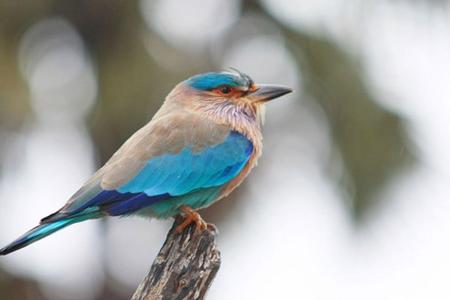Located about fifteen kilometers east of Hambantota (a similar distance west of Tissamaharama), Bundala National Park is one of Sri Lanka’s foremost destinations for birdwatchers, protecting an important area of coastal wetland famous for its abundant aquatic (and other) birdlife. The park is also home to significant populations of elephants, Marsh & estuarine crocodiles, turtles & other fauna, including the leopard. Stretching along the coast east of Hambantota, Bundala National Park is ideal for instant gratification: in a four hour jeep ride, we can see elephants, 8ft crocs, giant squirrels & flamingoes. Afternoon safaris in the dry season (December – May) provide visitors with the best chance of seeing the wildlife.


Stratification: Thorn forest, lagoons & sand dunes
Size: 6,216ha
Status: National Park & Ramsar wetland
Altitude: 0-10m
Temperature: 27 (degree c)
Annual Rainfall: 900mm to 1300mm
Best time of year to visit: October to April
Optimum duration of stay: 1 to 3 nights
Accommodation Options: Yala,Tissa
Highlights: Over 15,000 migratory shore birds during the Northern hemisphere winter.
Overview.
The first Ramsar site in Sri Lanka, Bundala National Park is a mix of scrub jungle and sand dunes bordering the sea. The park falls within the South-eastern Arid Zone of Sri Lanka, with a general climate that can be classified as hot and dry. The park consists of mainly dry thorny scabland andlagoons. The shallow brackish water lagoons located within the park are Koholankala, Maala, Embilikala and Bundala form a complex wetland system that harbours the rich bird life including several species of migratory birds. This is unmissable park for any bird watcher visits the island.
Flora & fauna of Bundala & Tissa Wetlands
The vegetation in the park can be categorized as terrestrial vegetation types and wetlands. The first type includes dry thorny scrubland, arid zone forests, sand dune vegetation, gentle seashore vegetation, maritime grasslands and Riverine forests. The wetlands consist of Salt marsh, Mangrove, Brackish water lagoons, water holes and tanks, seashore, streams and Salterns. A total of 383 species of plants have been recorded in Bundala. These consist of six endemic species and seven nationally threatened. The dominant large tree species are Weera, Neem, Palu, Kohomba and Divul. Andara is the dominant scrub.
Mammals
Viewing big game is not the best thing to do in Bundala. If one is very luck you will see an Elephant or two. Other smaller mammals in this area include Spotted Deer, Wild buffalo, the endemic Toque Macaque, Hanuman Langer, Jackal, Fishing cat, Rusty-spotted cat, Smabar, Porcupine, Indian Pangolin, Black-naped Hare and Wild Pig.
 BirdsEndemic species include the Brown-capped Babbler, Sri Lanka Jungle Fowl and Sri Lanka Woodshirke. The large number of migrant birds comprises mainly of Golden Plovers, Kentish Plovers, Lesser and Large Sand Plovers, Marsh and Curlew Sandpipers, Common Greenshank, Common Redshank, Little Stints which are the common ones and the rarities include the Broad-billed Sandpiper, Ruff and the Bundala specialist Red-necked Phalarope. Bundala has long been popular for its frequent flock of Greater Flamingos seen during the migrant season. They were also recorded for a number of years to be resident and seen through out the year. Lately however, due to changes in the water quality of the lagoons and salterns, the Greater Flamingos have not been seen for a few years in their original numbers.
BirdsEndemic species include the Brown-capped Babbler, Sri Lanka Jungle Fowl and Sri Lanka Woodshirke. The large number of migrant birds comprises mainly of Golden Plovers, Kentish Plovers, Lesser and Large Sand Plovers, Marsh and Curlew Sandpipers, Common Greenshank, Common Redshank, Little Stints which are the common ones and the rarities include the Broad-billed Sandpiper, Ruff and the Bundala specialist Red-necked Phalarope. Bundala has long been popular for its frequent flock of Greater Flamingos seen during the migrant season. They were also recorded for a number of years to be resident and seen through out the year. Lately however, due to changes in the water quality of the lagoons and salterns, the Greater Flamingos have not been seen for a few years in their original numbers.



Noteworthy amphibians include the endemic frog Bufo Athukoralei. The park is famous for its crocodiles also, including very large specimens of the Mugger Crocodile and the rare Estuarine Crocodile. Four species of Marine Turtles also come ashore to nest in the beaches of Bundala. The Hawksbill and Green turtle are the common species while the Olive Ridley and Leather-back Turtles are rare.